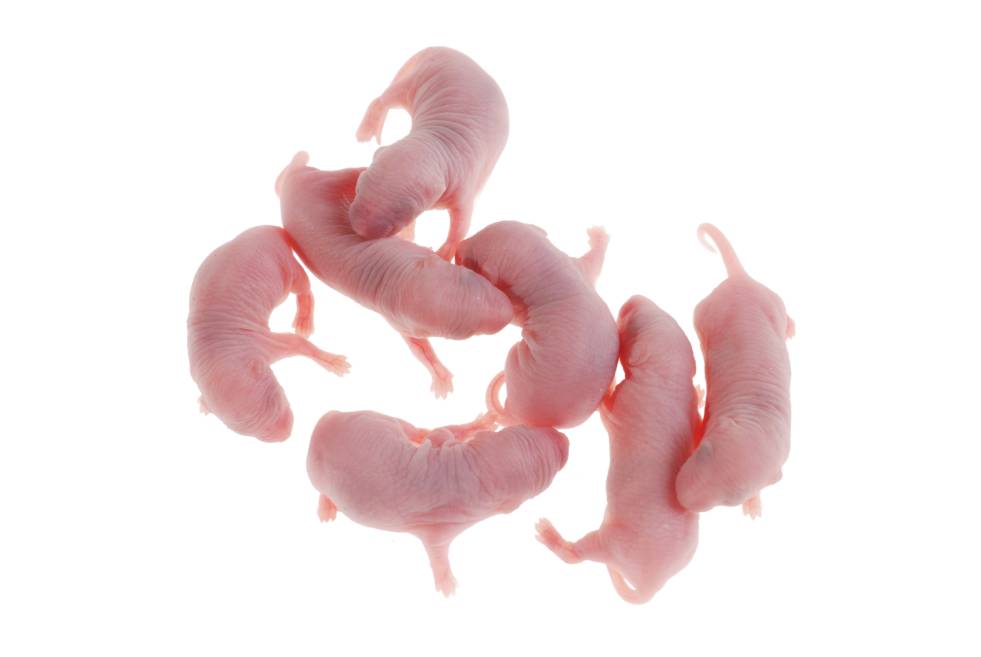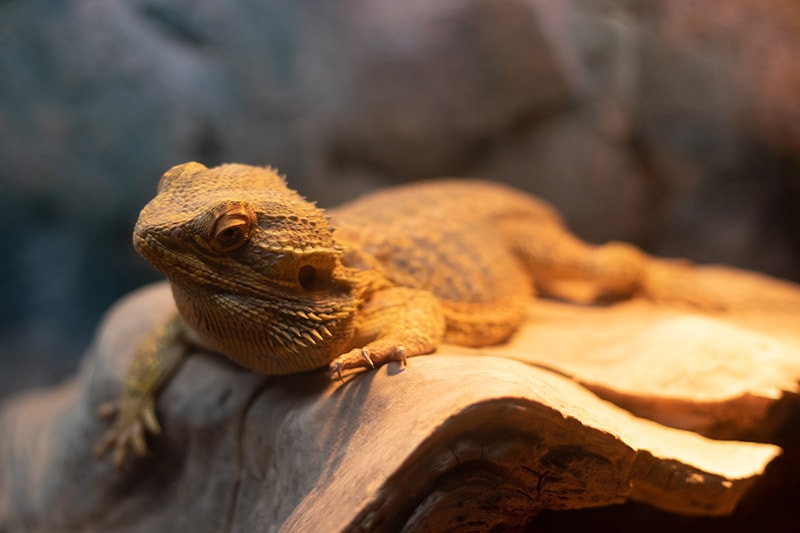Do Bearded Dragons Lay Eggs? Facts & FAQs

Updated on
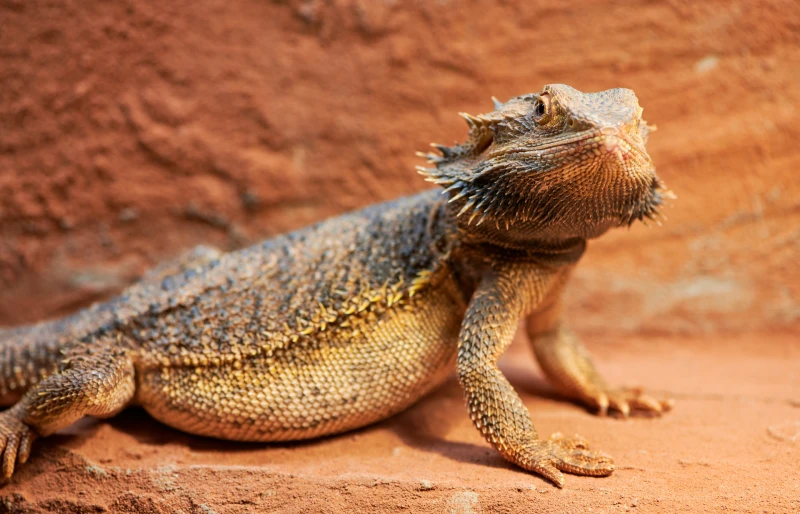
Bearded dragons are among the most popular pets in the US. They are calm and live for up to eight years. But how do they multiply? Do baby bearded dragons hatch from eggs? That’s right, and the females can easily lay up to 20 eggs in a single clutch. So, what do you do with all these new baby reptiles?
Can these fascinating creatures reproduce without mates? More importantly, what should you do to help a beardie after it’s laid so many eggs? We have the answers right here! Read on to learn how long it takes for the mother to lay eggs, what role the males play, and how to take care of a pregnant bearded dragon!
How Do Beardies Give Birth?
Bearded dragons are oviparous; they reproduce by laying clutches of eggs. On average, a female beardie lays 10–15 eggs per clutch, but the number can reach 20 eggs or even more. And, technically, they don’t need a mate to lay those eggs. That’s right: it’s not uncommon for females to lay dozens of infertile eggs. They won’t hatch, though.
For that to happen, the mother needs sperm, and she can only get it from a potential father. However, the reptile doesn’t have to “put it to use” immediately. Instead, many females store it for many months or even years, waiting for the perfect time to procreate. So, all they really need from the male bearded dragons is one mating session. Then, they get to decide when to use the sperm to fertilize the eggs.
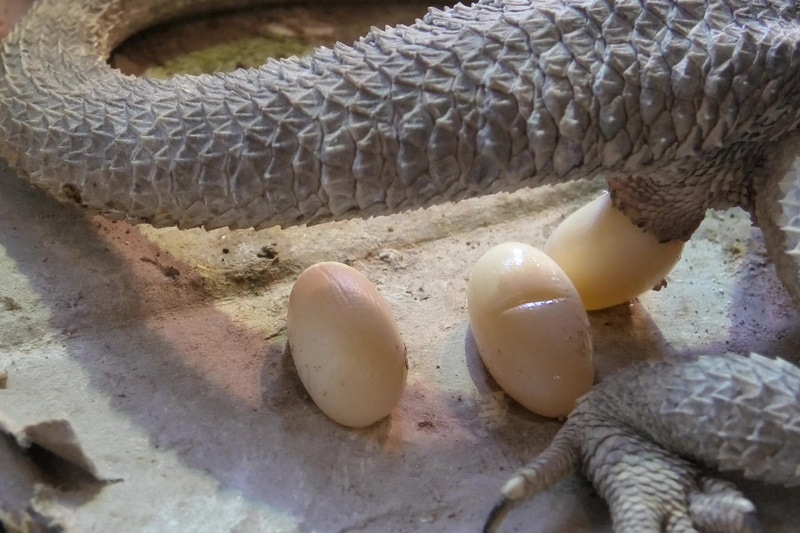
What Age Do Bearded Dragons Start Laying Eggs?
Most beardies reach maturity at 12–24 months. At that age, they can already produce eggs. But with these creatures, size plays a bigger role than age. So, if you feed your pet bearded dragon premium-quality food and create near-perfect conditions for it, chances are, the female will become sexually mature at just one-year-old! Yet, again, without a male, those eggs won’t be fertile.
In the wilderness, future dragon moms lay eggs when they’re 2–4 years old. And they lay more than one clutch per year, giving life to 50–60 baby dragons in just 12 months. On top of that, thanks to the unique structure of their bodies, females often carry multiple clutches at the same time. These reptiles don’t have to lay the first group to start a second one, either!
Is the Female Pregnant? Looking for Signs
The most obvious sign that the bearded dragon is expecting is a bigger belly. Another common side effect is a significantly lower energy level: a beardie that’s about to lay eggs is less active yet sleeps more. Now, a gravid bearded dragon is a female with eggs that are about to be laid. They usually do that 4–6 weeks after mating. To lend a hand, make sure the pet has a proper nesting area slash lay box.
Grab a container, fill it with bedding (moist reptile dirt or sand), and put it in her enclosure. Also, keep the female well-fed during this period and provide it with extra doses of calcium. This is important: sometimes, bearded dragons suffer from dystocia (failure to lay the eggs). If this goes on for a month, take the pet to a vet clinic ASAP to have the eggs removed. If you let nature take its course, the beardie might die.
To recap, the signs of bearded dragon pregnancy include:
- A bigger, engorged belly
- Lack of proper appetite
- Lack of energy or activity
- Desire to sleep more
- Somewhat frantic behavior
- Rapidly gaining weight
- Anxiety and irritability
- Digging or scratching
Female bearded dragons take a long time to dig holes in the sand and then fill those holes once the eggs are there. This is completely normal behavior. Don’t rush the pet while it’s busy making sure the eggs are well-hidden. If you remove it from the lay box during this moment, that will stress it out.
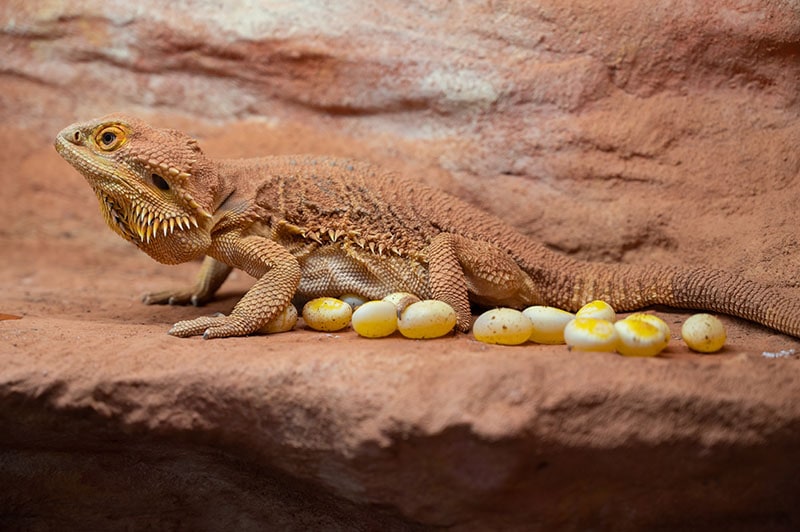
What Can You Do With the Offspring?
These reptiles only lay eggs when the time is right, which is from spring (March) to early summer (mid-June). This has to do with the temperature: once it gets warm enough for the eggs not to freeze over, the female gets a signal that it’s time to “get to work”. But the question still stands: what can the average reptile owner do with all those new pets?
Well, if you’re ready to handle a big family like that, you could try and keep them. If not, give the baby bearded dragons to a local breeder. A rescue shelter is another go-to solution; however, they might be more interested in cats, dogs, and rabbits. Here’s a closer look at the available options on the table:
- Professional reptile breeders
- Rescue center/animal shelter
- A local zoo that accepts reptiles
- A local pet store
- Animal control or wildlife agency
- A herpetology society
- Friends and family members
- Vet clinic bulletin boards also work
- Post it online (on social media)
Even if none of these options work, NEVER release a pet bearded dragon into the wild, as it won’t survive there. In this case, euthanasia will be a better choice. Also, keep in mind that it takes an egg 55–75 days to hatch (we’re talking about fertile eggs here, of course).
Caring for a Beardie After It Lays Eggs: A Quick Guide
Laying eggs takes a lot of effort on the mother’s side. After they’ve successfully spawned, exhaustion takes over. If you want to help it relax, start by giving the beardie a warm bath. Be very gentle with it and carefully rinse all the dirt off. The bearded dragon might be hungry, so try treating it with a bug or two. Dust them with calcium to stimulate a speedy recovery.
Next, just let the female get ready to hit the sack. For the next three days or so, keep feeding the happy momma with bugs, greens, protein, and calcium. The diet should also include lots of vitamins and minerals. A clean, warm environment, suitable humidity levels, and a positive attitude matter as well.
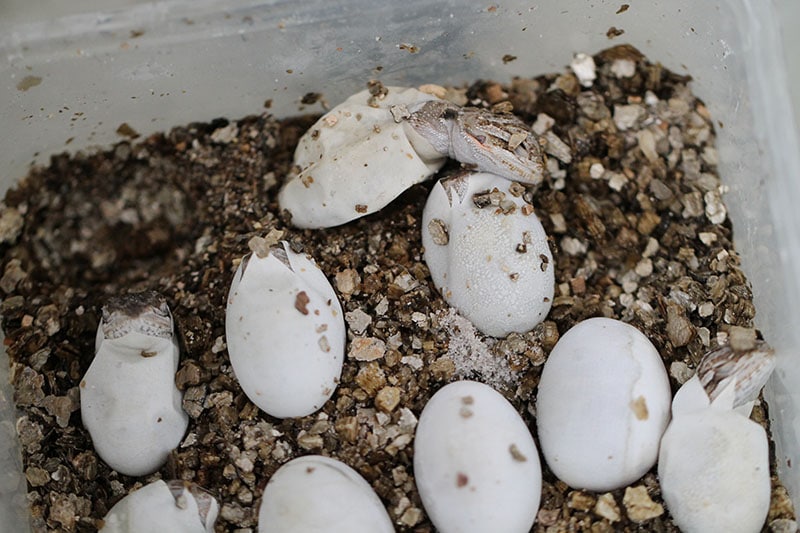
How Do You Know If the Eggs Are Fertile?
If you’re curious to know whether the laid eggs are fertile or not, you can check that with a flashlight. First, let the bearded dragon “do its thing” in peace. Once the eggs are in place, carefully remove them from the dirt and shine the light right through. This method is called candling, and if it reveals a pink embryo or red veins, that means there’s a reptile in there waiting to hatch!
Do your best not to disturb the eggs, as they’re incredibly fragile, and moving them might damage the baby bearded dragons. Don’t see any signs of an embryo? Then go ahead and throw those eggs away.
Do These Pets Like to Cuddle?
Yes, they certainly do! While you shouldn’t squeeze them nearly as hard as you would a big, strong dog, bearded dragons can, indeed, be affectionate. Sometimes, they climb onto their human parents’ laps or just sit still on the side of the couch. Also, if the two of you have a strong bond, the reptile won’t try to escape when you grab it with your hands.
To create a trusting relationship, be gentle when picking up the pet. Don’t ever pull it by the tail or legs, yell at it, or crank the volume on the TV up too high. If you’re having guests over, give them the 101 on how to treat bearded dragons. This is especially true for little children that have little to no experience with pet reptiles.
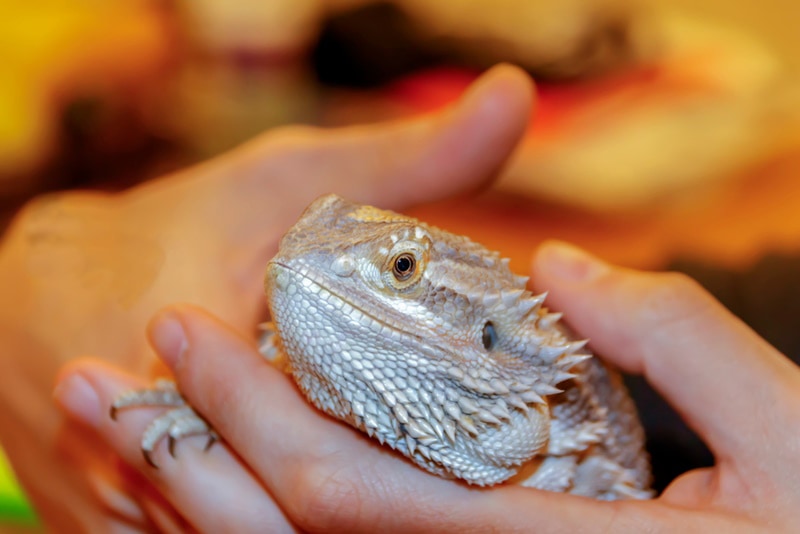
Bearded Dragon Bites: Are They Painful?
Will a bearded dragon bite me when it’s stressed? That’s a very common question among first-time owners. And the answer is yes, it might do that, but don’t worry: these creatures have very small teeth, and their bites aren’t at all painful. The only time you’ll feel something close to pain is if the teeth puncture your skin (which happens very rarely). Besides, in most cases, beardies bite by accident.
Other reasons include hunger, poor socialization, mishandling, and excitement. What should you do if the bite did break your skin, though? Clean it with warm water and soap first, and then disinfect it. There’s a very small chance of getting salmonella through a bearded dragon’s bite. So, be quick to disinfect and bandage the wound, just in case.
Conclusion
Thanks to their friendly, curious, and obedient nature, bearded dragons make excellent pets both for adults and kids. They are easy to maintain and can quickly turn into your favorite buds. That said, when these reptiles start laying eggs, that might be a bit confusing and even scary for an inexperienced owner.
But, if you follow the tips and tricks from our guide, it shouldn’t be hard to “handle” it. Take proper care of your scaly and thorny friend, learn to recognize early signs of pregnancy, and go from there! You can keep the eggs, give them to a breeder, or ask a friend or family member to take them off your hands. The choice is yours!
Featured Image Credit: C. Nass, Shutterstock

